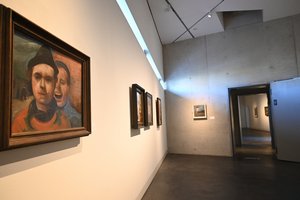
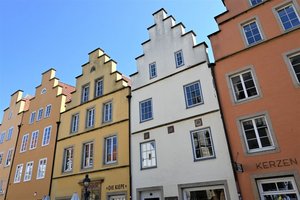
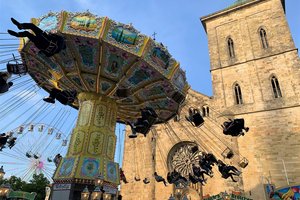
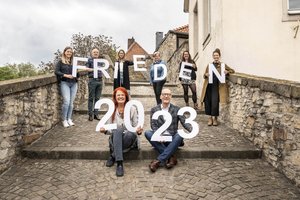
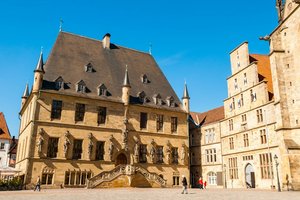
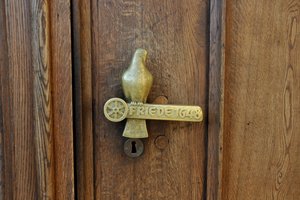

The Haarmannsbrunnen was created in 1909 by the Fürstenau sculptor Adolf Graef and is located at the southern end of the Herrenteich rampart, forming the end of the rampart. The fountain consists of a bronze figure of a miner labouring to drill a well and now rejoicing in his success. In front of him is an artificial rock face, from which the water flows over the worker at the drilled point and then collects in a semi-circular basin. From there, it flows into another basin.
The stonework is made of Durilit, a new type of artificial stone at the time, which was made from crushed Piesberg quarry stone, processed into concrete and poured into the appropriate mould.
The fountain is considered Germany's oldest workers' monument, but - contrary to what is often thought - it does not stand for the mining accident on 7 September 1893 in the Stüve shaft near Piesberg, in which nine miners lost their lives, which had already occurred 16 years earlier at the time of construction. Instead, it symbolises the high degree of toil and hardship of the work, which ultimately leads to the goal through perseverance and is rewarded with rich blessings.
The fountain was built at a time when it was being discussed whether the Herrenteich rampart, like all other ramparts in Osnabrück, should remain flattened.Friedrich Lehmann had become the responsible city architect in 1899 and his new design, which envisaged the preservation of the ramparts and a remodelling of the access from Möser-Platz as well as a ramp, pavilion and terrace, was approved. To embellish the project, the then Privy Councillor of Commerce, Senator of Osnabrück, Steel and Mining Director Dr August Haarmann promised to donate a statue. However, a free hand was requested in the choice of representation and the preservation of the rampart and against a planned ring road was advocated.
The architectural part was designed by the Swiss architect Alfred Hartmann, who worked for eight years in the Osnabrück city planning office. The bronze figure was created by Fürstenau sculptor Adolf Graef based on his own design. Private letters in Graef's estate reveal that he imagined a miner drilling the water out of a seam wall.
Haarmann's youngest son Allan once visited the artist in his studio in Berlin-Charlottenburg to see the progress of the work. He saw the man who was modelling, a burly Berliner, who did not feel at all comfortable in the miner's trousers, which had been ruthlessly doused with water and obtained from the mining district, and who was holding a real hammer and drill rod in his hands.
It is also thanks to a coincidence that the miner's figure still adorns the fountain today. During the Second World War, the miner had to be dismantled "to reinforce the metal reserve", as did the shepherd (Heinrich Ströker) from Rosenplatz. In 1949, an Osnabrück woman discovered the bronze man by chance in Bredelar near Brilon among other figures on the collection site of a scrap metal smelter. She reported the find to the building authority, and the town planning officer Reiling was able to have the work of art bought back by the town. Apart from a small dent on the hand, the figure has remained intact.
Please inquire on the homepages or directly in the respective houses about the current opening and event times, prices, cancellations, etc.. This information can change at short notice!